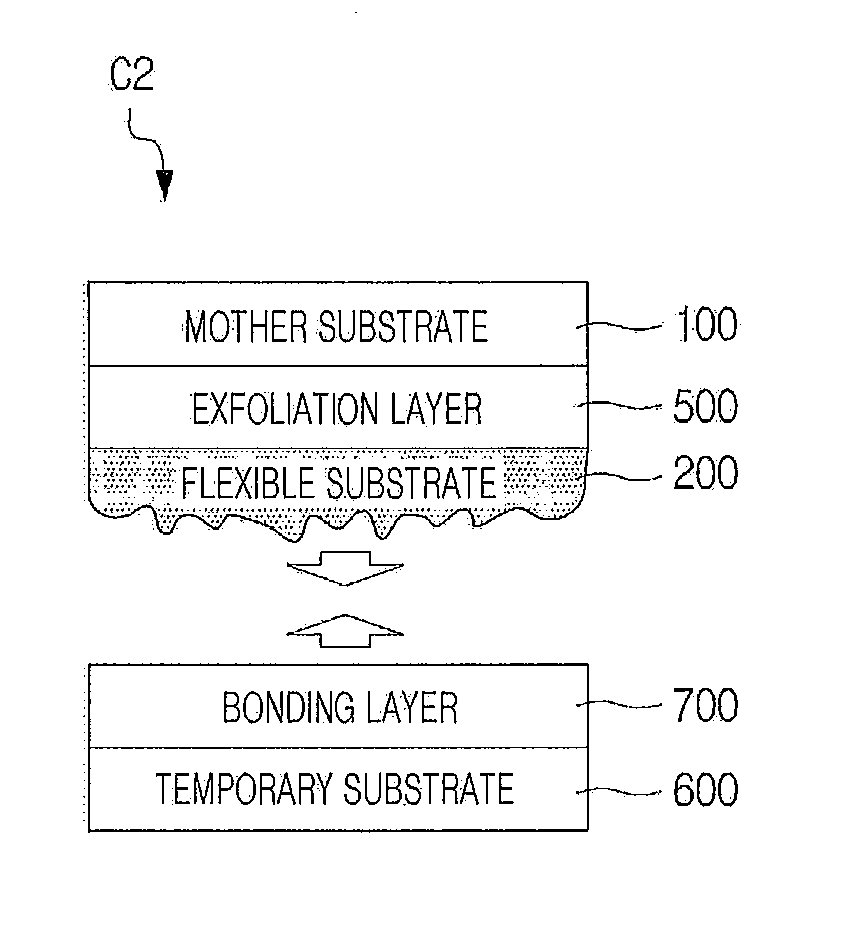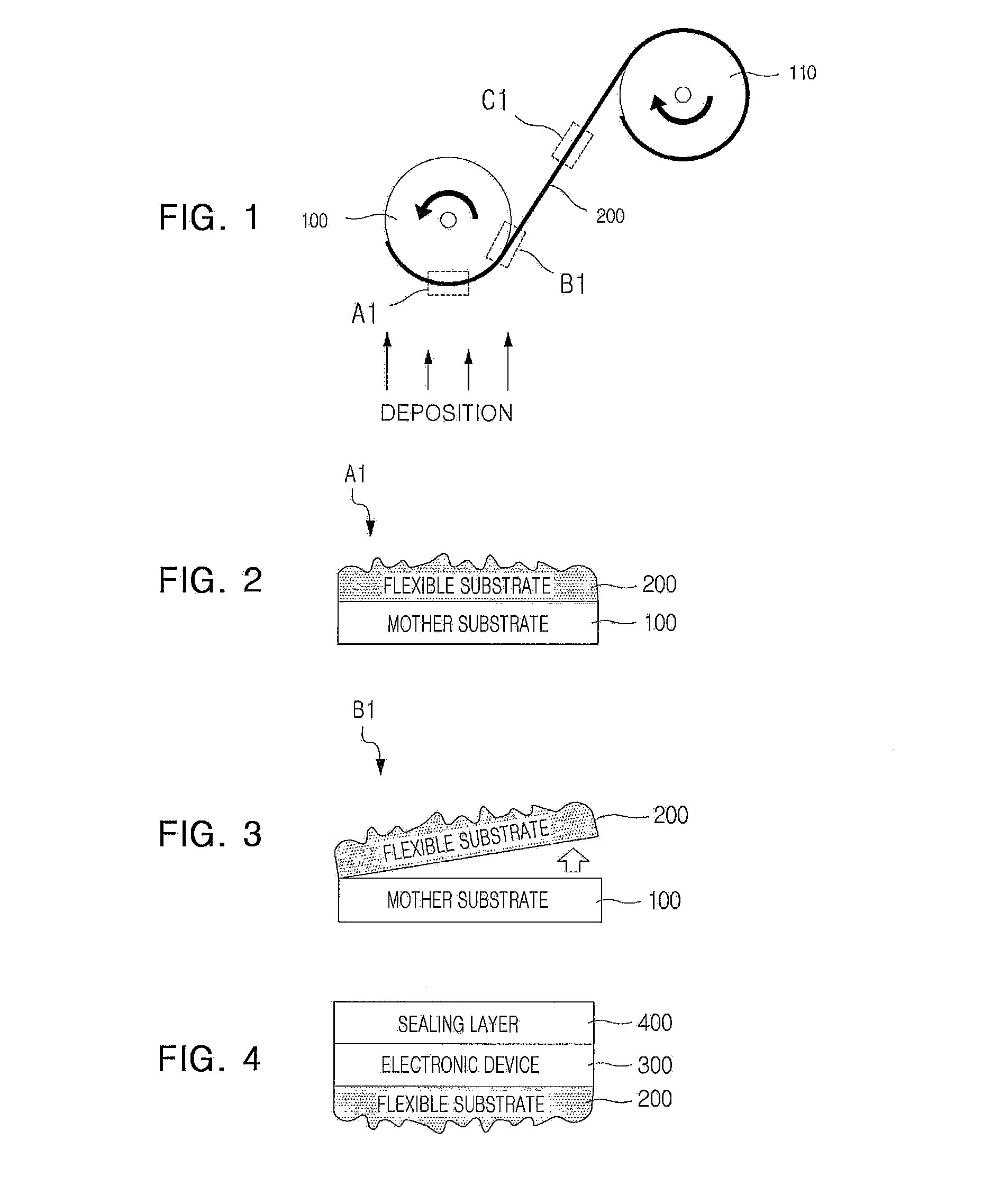Method for Manufacturing a Flexible Electronic Device Using a Roll-Shaped Motherboard, Flexible Electronic Device, and Flexible Substrate
a technology of flexible electronic devices and roll-shaped motherboards, applied in the direction of final product manufacturing, solid-state devices, resistive material coatings, etc., can solve the problems of weak interfacial bonding strength, degrading yield, and devices that cannot be manufactured using plastic substrates, etc., to achieve the manufacture of high-performance flexible electronic devices, low cost, and easy-to-reach
- Summary
- Abstract
- Description
- Claims
- Application Information
AI Technical Summary
Benefits of technology
Problems solved by technology
Method used
Image
Examples
second embodiment
[0059]As illustrated in FIGS. 6 to 8, in a second embodiment of the present invention, an exfoliation layer 500 is formed between the roll-type substrate 100 and the flexible substrate 200 to manufacture the flexible substrate 200. In the case of forming the exfoliation layer 500, the flexible substrate 200 may be separated at an interface of the substrate 200 as illustrated in FIG. 6, may be separated at an interface between the roll-type mother substrate 100 and the exfoliation layer 500 as illustrated in FIG. 7, or may be separated at an inner side of the exfoliation layer 500 as illustrated in FIG. 8. Here, in the case of FIG. 6, an additional process may not be necessary. However, in the case of FIGS. 7 and 8, a process of removing the exfoliation 500 may be added.
[0060]In the second embodiment of the present invention, similarly to the first embodiment, the roll-type mother substrate 100 is physically separated from the flexible substrate 200 by using low interfacial bonding s...
third embodiment
[0062]FIGS. 9 to 14 are schematic diagrams illustrating a method of manufacturing a flexible electronic device according to a third embodiment of the present invention.
[0063]Referring to FIGS. 9 to 14, in the method of manufacturing a flexible electronic device, according to the third embodiment of the present invention, the flexible substrate 200 is deposited on the roll-type mother substrate 100 (A2 of FIG. 9 and FIG. 10), and then a bonding layer 700 is interposed thereon to bond a temporary substrate 600 to the flexible substrate 200 (B2 of FIG. 9 and FIGS. 11, and C2 of FIG. 9 and FIG. 12). Thereafter, the roll-type mother substrate 100 is separated from the flexible substrate 200 (D2 of FIG. 9 and FIG. 13), and an electronic device 300 and sealing layer 400 are formed on a separation surface of the flexible substrate 200 to manufacture a flexible electronic device (E2 of FIG. 9 and FIG. 14).
[0064]That is, the third embodiment is different from the first embodiment in that the ...
PUM
| Property | Measurement | Unit |
|---|---|---|
| surface roughness | aaaaa | aaaaa |
| temperature | aaaaa | aaaaa |
| thickness | aaaaa | aaaaa |
Abstract
Description
Claims
Application Information
 Login to View More
Login to View More - R&D
- Intellectual Property
- Life Sciences
- Materials
- Tech Scout
- Unparalleled Data Quality
- Higher Quality Content
- 60% Fewer Hallucinations
Browse by: Latest US Patents, China's latest patents, Technical Efficacy Thesaurus, Application Domain, Technology Topic, Popular Technical Reports.
© 2025 PatSnap. All rights reserved.Legal|Privacy policy|Modern Slavery Act Transparency Statement|Sitemap|About US| Contact US: help@patsnap.com



